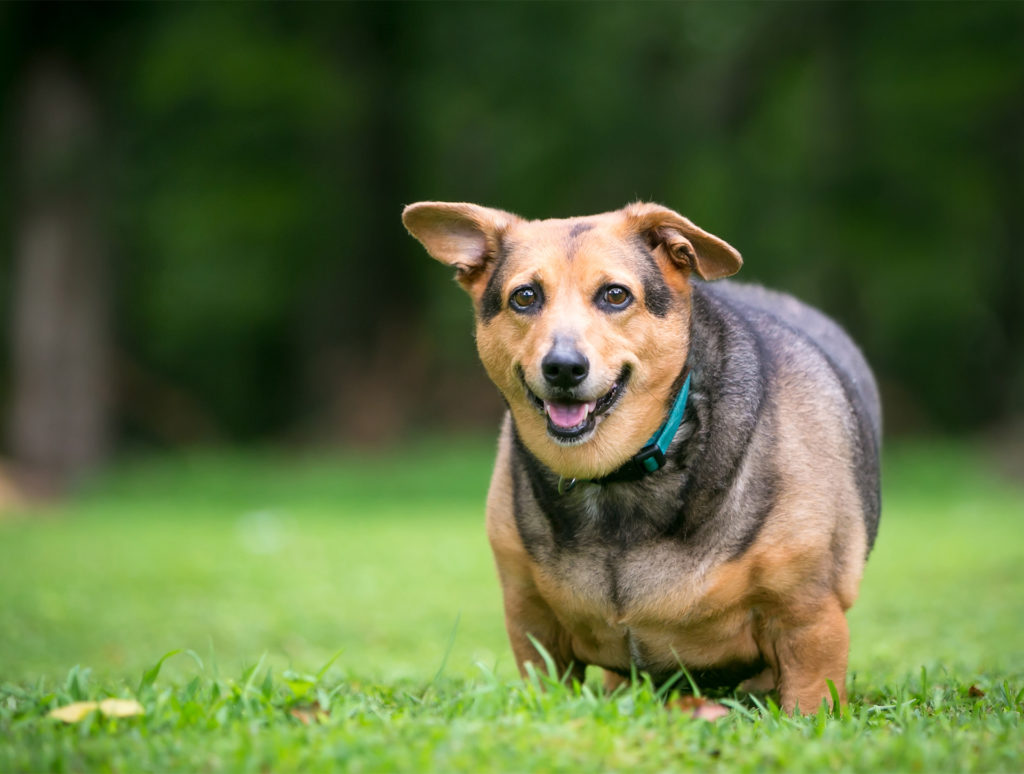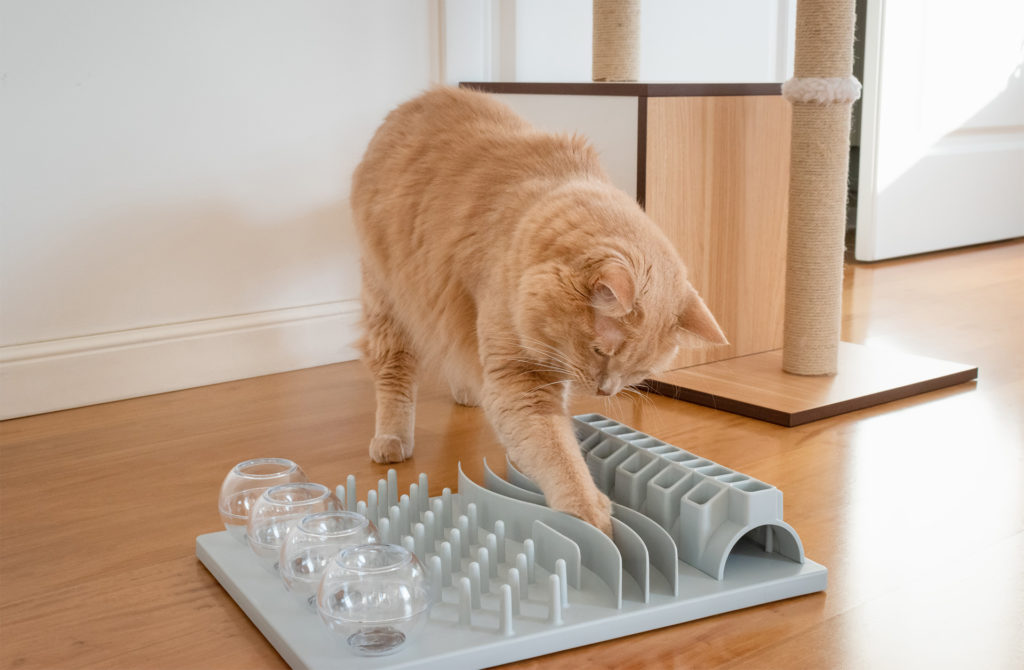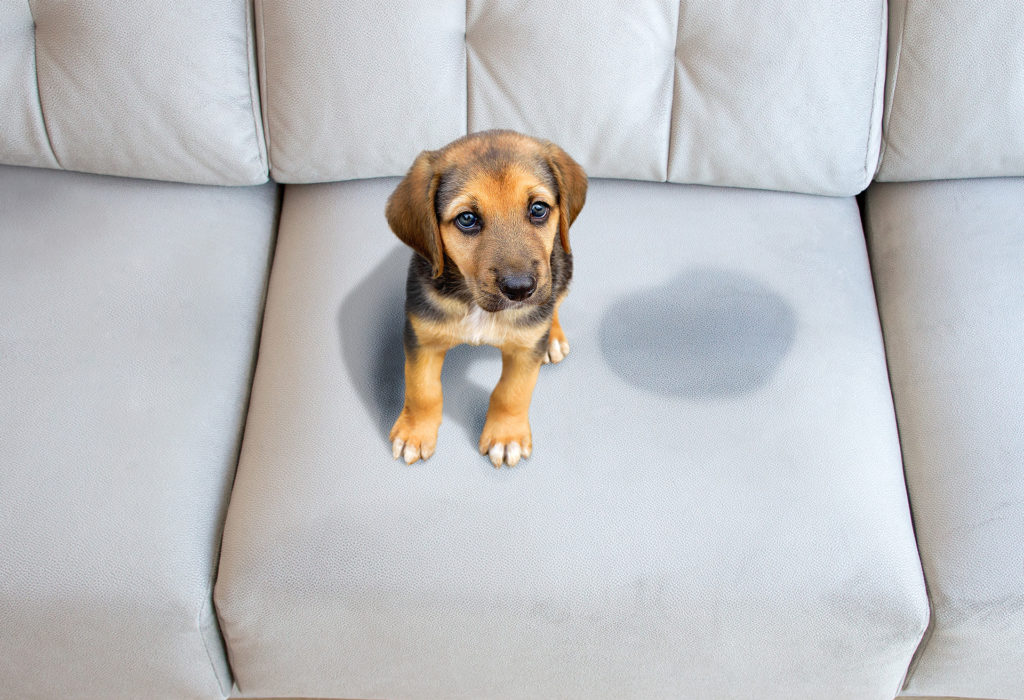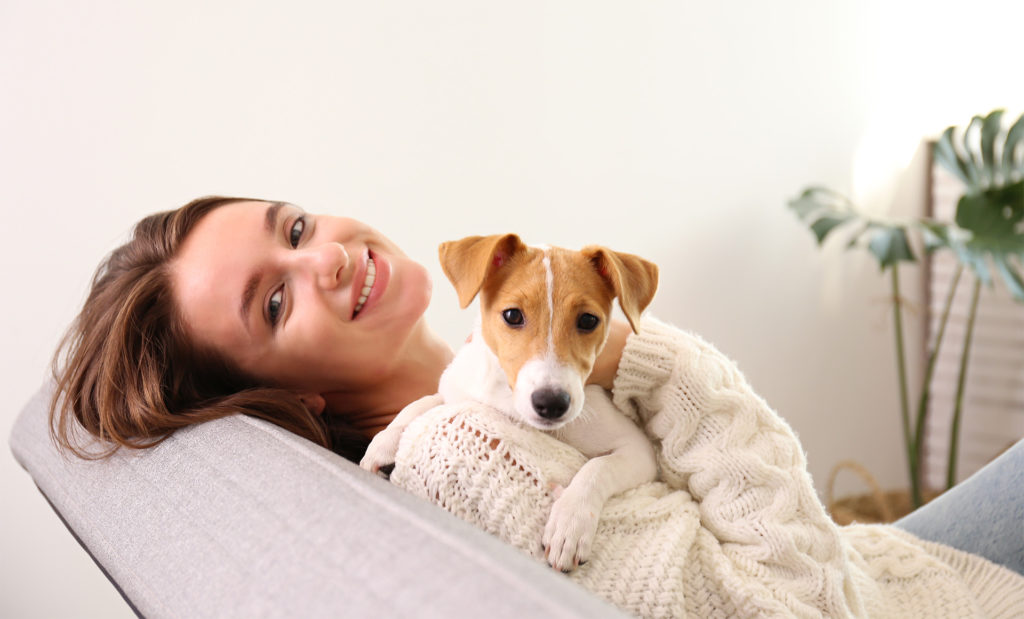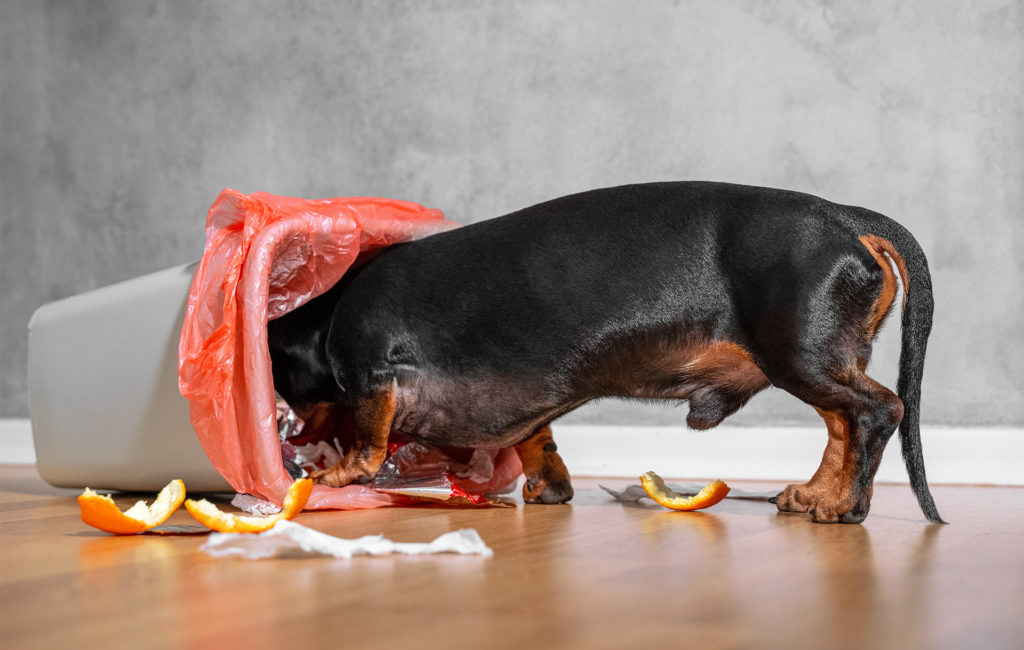Help Your Pet Get Fitter! Plus Safety Tips For Puppies
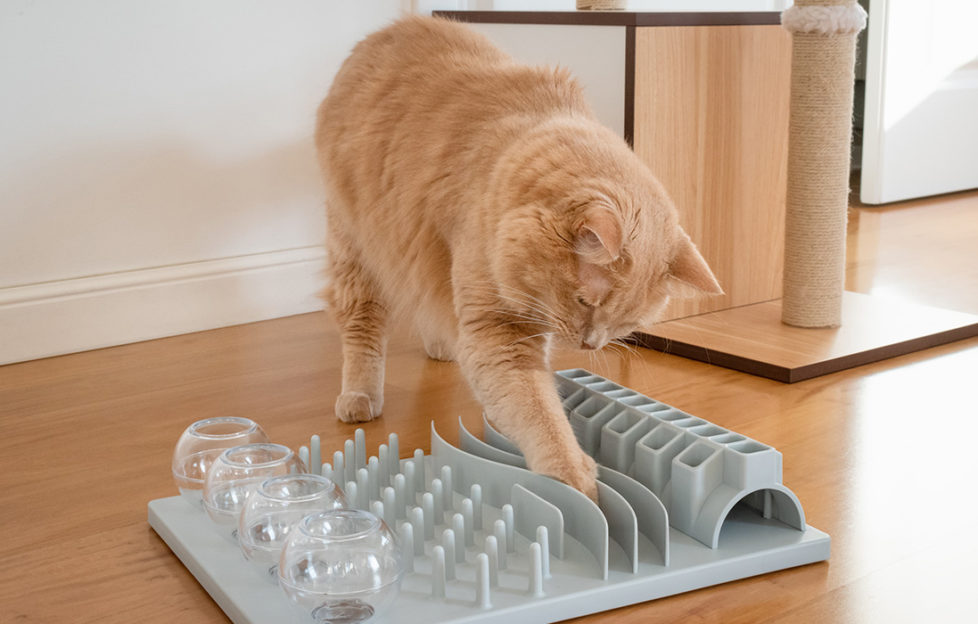
Many people have made New Year fitness resolutions. This is an admirable goal, and one that isn’t limited to humans!
Pet owners may want to consider how to get their four-legged friends in top shape as well. Is your pooch or moggy is looking a little out of sorts? It could be time to help them kick=start a new exercise and diet routine too.
Dr Jessica May, UK Lead Vet at video vet service FirstVet, shares her advice on how to tell if your pet needs a lifestyle change and how to help them on their way.
We also have some important tips for anyone taking on a new puppy, from the experts at tails.com
How to tell if your pet is overweight
You may not notice that your pet is overweight immediately. Knowing how to spot the signs that a dog or cat is heavier than it should be is an important first step towards helping them get healthier.
The simplest way to tell whether your pet is a healthy weight is to do a quick Body Condition Score (BCS). This chart maps out the physical characteristics that show whether your pet is above, below or at their ideal body weight.
A score of 5 is ideal, meaning that
- ribs should be felt with a light touch without being clearly visible
- the waist should be clearly visible when looking at your cat or dog from above (narrowing in front of the pelvis)
- dogs should have a fat pad under their abdomen
- in dogs, you should also notice an abdominal tuck, meaning that their stomach should be higher than their chest when viewed from the side.
Do a body condition score 2-3 times per month to keep track of changes in your pet’s weight.
If you do notice any fluctuations in your pet’s weight, it may be best to consult a veterinarian. An increase in weight can simply be the consequence of reduced exercise, a sedentary routine, overfeeding, or a combination of these factors.
However, it may also be a sign of a hormonal disease, such as hypothyroidism, or Cushing’s Disease. You may also want to discuss any medication that your pet is on with a vet. Some medicines can cause an increased appetite, making it more important to control your pet’s portions.
How to help your pet exercise
In general, dog owners should try to make sure that their pets are exercised twice a day – although the intensity of the exercise will vary according to the size, age and breed of the dog.
For very young or very old dogs, giving them the chance to run or walk around the garden may be the best option to avoid over-exercising. For puppies, a good estimate of how much exercise they can tackle in one session is around 5 minutes per month of their age.
Larger dogs or working breeds, such as Labradors or Border Collies will be able to tackle more extensive exercise. They should be taken for two substantial walks each day.
Make sure to keep consistency in mind when planning your dog’s exercise routine. Big changes can leave your dog under-exercised or exhausted. If you want your pet to embrace activity, then increasing the amount they take on gradually can help them to adapt, one step at a time.
Whether you own a cat or a dog, you can try all kinds of innovative ways to encourage your pet to keep moving around the house. You could do this by hiding their food in different places for them to find, giving them some incentive to move around more during the day. You can also give them toys that keep them active and engaged.
One good example for dogs is the KONG, a rubber toy which can hold food, pushing pets to chew and work for their meals, rather than eating their food all at once. For cats, plan some time for games and make sure that they are well stocked with interactive toys to avoid them getting bored. If your cat likes to wander outdoors, make sure to give them some time to roam during the day.
How to find the healthiest diet for your pet
As a general rule, the simplest way to make sure that your pet gets the nutrition they need is to give them a complete commercial pet food. These foods provide a complete diet for dogs or cats, so that they are fully nourished and healthy.
Experimenting with home-prepared or vegan diets can be dangerous for pets, particularly for cats, which must never be placed on meat-free diets.
Always speak to a vet before making any major changes to your pet’s diet.
Try to be careful when dishing out treats to your pet. When pets plead for more food it can be easy to bow to the pressure. So remember to take out some of their measured daily food allowance to account for their treats. Making sure that they are maintaining a healthy diet is best for them in the long term.
10 tips to keep your puppy safe and happy…
Before welcoming your new puppy into its forever home, there are a few things you need to take care of. Owning a dog comes with a lot of responsibility, but puppies especially come with a never-ending curiosity which can sometimes lead to trouble.
Specialists at tails.com have put together 10 handy tips on how to protect yourself, your puppy, and your home.
Training pads
Training pads are an essential part of toilet training your puppy. The younger your puppy is, the harder they find it to control their bladder, so if they’ve got to go – they’ve got to go. Using training pads, a waterproof bed or a combination of both can prevent accidents, ruined furniture and slippery floors.
Puppy gate
Puppy gates are the best way to keep your new four-legged friend out of a room, or away from any other pets or children that could potentially cause them harm.
If you have to leave them alone at any point ( you should for short periods, to increase their independence) using a puppy gate is the most effective method to keep them confined to a safe area.
Check your plants
When getting a new puppy it’s important to make sure the inside and outside of your home is free from any plants or flowers that could be poisonous and toxic. These include
- lavender
- eucalyptus
- peonies.
Different types of plants and flowers bloom depending on the season, so it’s crucial to regularly check your garden – and any houseplants too.
Remove dangerous items
Small toys aren’t just a choking hazard to babies, but dogs too. Make sure you keep your home tidy inside and out. Ensure that anything small or sharp, such as kids’ toys or garden tools, are tidied away.
Keep chairs away from tables (and supervise on sofas)
Young puppies have fragile bones, so jumping or falling from high heights can put them at a pretty big risk of injury.
Keep chairs far enough from tables so that your pup can’t try to climb. If they’re sitting on the couch or bed with you, make sure they’re supervised at all times.
Non-toxic cleaning products
A new pup comes with a lot of new mess. However, even though you might find yourself cleaning up more than usual, it’s vital to make sure your cleaning products don’t contain any chemicals that can harm your dog.
Check cleaning products for any ingredients like
- bleach
- ammonia
- formaldehyde
- glycol ethers
- chlorine
These can be toxic to your puppy even once they’ve been put away, due to the vapours left behind. You can get cleaning products made specifically to be pet safe.
Hide toxic household items
The likes of medicine and food can also be highly toxic to your pups. Make sure that they can’t get into your kitchen cupboards or onto the counter tops. Ensure any medication is kept high up, out of reach.
Keep bins covered
Those viral videos of a very guilty-looking dog with bin contents spilt all over the kitchen floor are funny. However your dog getting into your bin can be extremely dangerous.
Make sure your dog can’t open your bin, by either keeping it out of reach or purchasing a bin with a special lid to keep your puppy out. It not only cuts the risk of your pup eating anything sharp, toxic or something they could choke on – it also saves you from a messy, smelly house.
Keep cords and wires tidy
It’s not uncommon to have wires lying around but these are a huge risk to your pup. Keep cords and wires safe by using secure cord covers, or completely out of reach if possible.
You can also use puppy deterrent spray to keep them away from electrical items or anything else you don’t want them sinking their teeth into.
Close the toilet lid
We know (and understand) that dogs can be disgusting. Never-ending exploring and running around can work up quite a thirst in a young puppy.
Keep them safe by making sure your toilet lid is shut. Remnants of bleach or other toilet cleaning products can be highly toxic. Make sure there is always fresh water in their bowl.

